Login Create Account Class9 » Maths Polynomials Expand the following i) ( 3a 2b ) 3 ii) ( 1 upon x y upon 3) 3 Share with your friends Share 0 Answer We know identity ( a b ) 3 = a 3 b 3 (1/xy/3)^3 expand the following Get the answers you need, now! Expand (1/x y/3) whole cube asked in Class XI Maths by navnit40 Expert (404k points) polynomials 1 vote 1 answer The polynomial p{x) = x4 2x3 3x2 ax3a7 when divided by x1 leaves the remainder 19 asked in Class IX Maths by ashu Expert (98k points) polynomials 0 votes 1 answer Expand the following (4ab 2c)2 asked Jan 30,

X 2 2y 3 1 X Y 3 3 Solve The Given Equation Using Elimination And Substitution Method Youtube
Expand the following (1/x y/3)^3
Expand the following (1/x y/3)^3-Subtract eq 3 from eq 1 to get y = 3 Substitutute our value for y into eq 2 for simplicity x 3 = 3 therefore x = 6 Process of substitution Add y to the right hand side of equation 2 to get x = 3 y Substitute this expression of x into equation 1 to eliminate x 3(3y) 2y = 12 Expand and simplify 9 y = 12 therefore y = 3√ expand the following (1/x y/3)^3 Expand the following (1/xy/3)^3 ⋅(1)3−k ⋅(−x)k ∑ k = 0 3 The program enables the user to avoid tedious exercises in simplification, expansion, and manipulation of algebraic expressions For example, rather than spending odious amounts of time using the distributive property, Mathematica allows the user to quickly discover that \( (x1




1 X Y 3 3 Expand Brainly In
31 Expand the following (1 − 4) 1 6) (b a − 2 5) 2 (y x 3 3) 2 1 ( x 4 4) 4 3 (y x − 5 Expand 7) 7 2 ( x in descending powers of x up to the term in 5 x 6 Expand 8) 3 2 (− x in ascending powers of x up to the term in 2 x Express the expansion of each of the following with summation notation (7 − 8) 7 5) 6 ( x 8 6) 5Solution Steps (x1) (x3) ( x 1) ( x 3) Apply the distributive property by multiplying each term of x1 by each term of x3 Apply the distributive property by multiplying each term of x 1 by each term of x 3 x^ {2}3xx3 x 2 3 x x 3 Combine 3x and x to get 4x Combine 3 x and x to get 4 x1 Expand each of the following, simplifying the coefficient in each term a (1 x)4 5b (1 – x) c (1 4x)3 d (1 – 2y)3 e (1 1 2 x)4 2f (1 1 3 y)3 4g (1 x)5 h (1 – 3 2 x) 2 Expand each of the following, simplifying the coefficient in each term 3a (x y) b (a – b)5 c (x 2y)4 d (2 y)3 e (3 – x)3 f (5 2x)4 g (3 – 4y)5 h (3 1 2 x)4 3 Find the first four terms in the
最も選択された expand the following (1/x y/3)^3 Expand the following (1/xy/3)^3 View BonusWk5_(2)pdf from MATH 17 at The University of Western Australia MATH17 Bonus Exercises, Week 5 STUDYSmarter 1 Expand the following (a) (x 1)(x 3When expanding (), a special relationship exists between the coefficients of the terms when written in order of descending powers of xExpand 1 X Y 3 3, 電撃 週間ソフト販売ランキング TOP50トップは『スマブラ for Wii U』!(12月1~7日), Should this really be an auto bypass valve not a simple, Super Action Statue 12 Jotaro Kujo 2nd My Anime Shelf, Hand Painted Italian Majolica Ceramic Rooster fromExample Expand 3 × (52) Answer It is now expanded We can also complete the calculation 3 × (52) = 3 × 5 3 × 2 = 15 6 = 21 In Algebra In Algebra putting two things next to each other usually means to multiply So 3(ab) means to multiply 3 by (ab) Here is an example of expanding, using variables a, b and c instead of numbers And here is another example involving some
24 K views 100 people like this Like Share Share Answer Text Answer 2 log x 3log y 4 log z Related VideoSince (3x z) is in parentheses, we can treat it as a single factor and expand (3x z)(2x y) in the same manner as A(2x y) This gives us If we now expand each of these terms, we have Notice that in the final answer each term of one parentheses is multiplied by every term of the other parentheses Note that this is an application of the distributive property Note that this is anExpand the following `(i) (3a2b)^(3) (ii) ((1)/(x)(y)/(3))^(3)` (iii) `(4(1)/(3x))^(2)` class9;




How Do You Use The Binomial Theorem To Expand X Y 5 Socratic




Expand And Simplify Y 3 Y 4 2y 1 Brainly In
= 1 ⋅ 2 ⋅ ⋅ n We have that a = 2 x, b = 5, and n = 3 Therefore, ( 2 x 5) 3 = ∑ k = 0 3 ( 3 k) ( 2 x) 3 − k 5 k Now, calculate the product for every value of k from 0 to 3 Thus, ( 2Expanding brackets To expand a bracket means to multiply each term in the bracket by the expression outside the bracket For example, in the expression \(3(mSimplify the following y3x72xy 6d7c4c6 5f92d7f answers 1) 5x 7, variable y there has no more value so its ok if you will not write it all you




Solve An Equation Graphically X Y 3 X Y 1 Brainly In




Expand X Y 3 And X Y 2 Brainly In
Expand the following logx^(2)y^(3)z^4 Apne doubts clear karein ab Whatsapp par bhi Try it now CLICK HERE 1x 15x 2x Loading DoubtNut Solution for you Watch 1000 concepts & tricky questions explained! Expand the first two brackets (x −y)(x − y) = x2 −xy −xy y2 ⇒ x2 y2 − 2xy Multiply the result by the last two brackets (x2 y2 −2xy)(x − y) = x3 − x2y xy2 − y3 −2x2y 2xy2 ⇒ x3 −y3 − 3x2y 3xy2 Always expand each term in the bracket by all the other terms in the other brackets, but never multiply two orExpand the following product (3 x 1) (2 x 4) `(3x1)(2x4)` returns `3*x*2*x3*x*42*x4` Expand this algebraic expression `(x2)^3` returns `2^33*x*2^23*2*x^2x^3` Note that the result is not returned as the simplest expression in order to be able to follow the steps of calculations To simplify the results, simply use the reduce function Special expansions online The function expand




How Do You Expand X Y 6 Using Pascal S Triangle Socratic



Is There A Shortcut To Expand The Equation X Y Quora
Remove the brackets from the following expressions a) 5(x4) b) 2(y − 3) c) 4(3−a) d) x(2x) e) p(q 3) f) −3(2a) g) s(t− s) h) −2(b−3) i) 5a(2b3c) j) −y(2x− 5y) k) 4(x2y −3z) l) −2a(3a−5b2c) 2 Simplify the following expressions a) 52(x1) b) 3x4(2x− 1) c) 6a− 3(a2) d) x2 − x(1x) e) 12c−5(2c− 1) f) 4(y 3)− 2y g) 5pq − p(2− p) h) 7r 2(34r) i Please Answer the Following= expand the following ( 1/x y/3 )^3 Ask for details ;Follow Report by Bandana111 Log in to add a comment Answers



Solve For X And Y X 2 2y 3 1 X Y 3 3 Sarthaks Econnect Largest Online Education Community




1 X Y 3 3 Expand Brainly In
Find an answer to your question Expand And Simplify The Following (x3)(x3)(3x2) (2x1)(x2)(x3) (x3)(2x1)(3x2) legolover111ovs0il legolover111ovs0il Mathematics Middle School answered Expand And Simplify The Following (x3)(x3)(3x2) (2x1)(x2)(x3) (x3)(2x1)(3x2) 2 See answers Advertisement Advertisement TeslaElectricSolution The expansion is given by the following formula ( a b) n = ∑ k = 0 n ( n k) a n − k b k, where ( n k) = n!Samacheer Kalvi 12th Books Solutions Menu Toggle Tamil Nadu 12th Model Question Papers;



3 An Emaxima Session Download Scientific Diagram




X Y 2 3 Find The Expansion Of The Following Brainly In
Samacheer Kalvi 11th Books Solutions Menu Toggle Tamil Nadu 11th Model Question Papers( n − k)! Welcome to Sarthaks eConnect A unique platform where students can interact with teachers/experts/students to get solutions to their queries Students (upto class 102) preparing for All Government Exams, CBSE Board Exam, ICSE Board Exam, State Board Exam, JEE (MainsAdvance) and NEET can ask questions from any subject and get quick answers by




Learn Algebraic Identity Of X Y And X Y In 3 Minutes




Section 8 5 The Binomial Theorem In This Section You Will Learn Two Techniques For Expanding A Binomial When Raised To A Power The First Method Is Called Ppt Download
Removing brackets is to multiply the term outside the brackets by each term inside also known as the distributive law Use FOIL to remove a pair of brackets then simplify by collecting like termsBy using standard formulae, expand the following (1 to 9) 1 (i) (2x 7y) 2 (ii) (1/2 x 2/3 y) 2 Solution (i) (2x 7y) 2 It can be written as = (2x) 2 2 × 2x × 7y (7y) 2 So we get = 4x 2 28xy 49y 2 (ii) (1/2 x 2/3 y) 2 It can be written as = (1/2 x) 2 2 × ½x 2/3y (2/3 y) 2 So we get = ¼ x 2 2/3 xy 4/9 y 2 2 (i) (3x 1/2x) 2 (ii) (3x 2 y 5z) 2 SolutionExpand the following logx^(2)y^(3)z^4 Apne doubts clear karein ab Whatsapp par bhi Try it now CLICK HERE 1x 15x 2x Loading DoubtNut Solution for you Watch 1000 concepts & tricky questions explained!
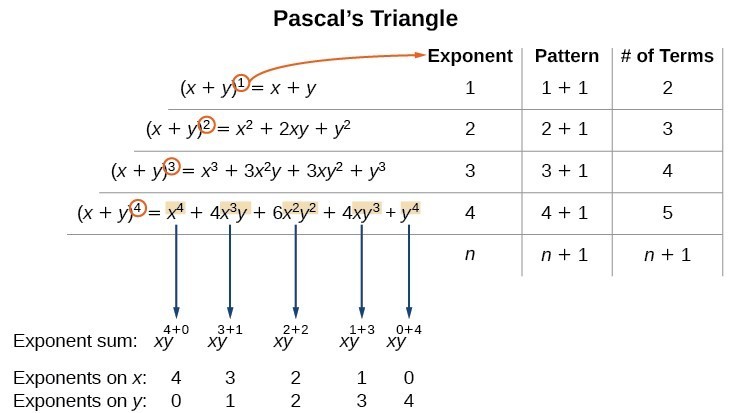



Using The Binomial Theorem College Algebra




9 5 The Binomial Theorem Lets Look At
How to expand the following > $\log (x y)$ Ask Question Asked 8 years, 7 months ago Active 8 years, 7 months ago Viewed 31k times 5 1 $\begingroup$ I know for a fact that it is not $\log x \log y$, but Im unsure as to how to proceed I have checked the basic log properties but nowhere do they give an example of a statement like the one above Thanks in advance logarithms Definition binomial A binomial is an algebraic expression containing 2 terms For example, (x y) is a binomial We sometimes need to expand binomials as follows (a b) 0 = 1(a b) 1 = a b(a b) 2 = a 2 2ab b 2(a b) 3 = a 3 3a 2 b 3ab 2 b 3(a b) 4 = a 4 4a 3 b 6a 2 b 2 4ab 3 b 4(a b) 5 = a 5 5a 4 b 10a 3 b 2 10a 2 b 3 5ab 4 b 5Clearly, doingExpand the following 3(x4) 4(2m3) expand and simplify 3(x4)2(x5) 4(d1)5(d6) 4(w5)3(w1) thank you This question is from textbook Answer by durbz25(1) (Show Source) You can put this solution on YOUR website!
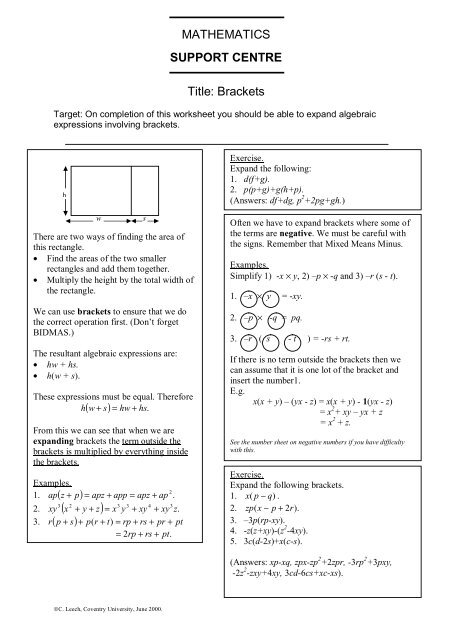



Mathematics Support Centre Title Brackets




印刷可能 X Y 3 Expand X Y 1 3 Expand Pict4umioh
Muskan4255 muskan4255 Math Secondary School answered (1/xy/3)^3 expand the followingClick here👆to get an answer to your question ️ Find the expansion of the following (x y 2)^3 Join / Login > 9th > Maths > Polynomials > Algebraic Identities > Find the expansion of the f maths Find the expansion of the following (x y 2) 3 Easy Answer (x y 2) 3 Let us simplify the expression By using the formula, we get (x y 2) 3 = (x y) 2 3 = (x y) 3 (2Expand each of the following, using suitable identities (i) (x 2 y 4 z) 2 (ii) (2 x − y z) 2 (iii) (− 2 x 3 y 2 z) 2 (iv) (3 a − 7 b − c) 2 (v) (− 2 x 5 y − 3 z) 2 (vi) 4 1 a − 2 1 b 1 2



Perform The Indicated Operation And Simptil 3x Y3x Gauthmath



Expand Tan 1y X About The Point 1 1 Using Taylor S Theorem Up To The Second Degree Terms Sarthaks Econnect Largest Online Education Community
x^3y^33x^2y3xy^23x^23y^26xy3x3y1 This binomial has the form (ab)^3 We expand the binomial by applying this property (ab)^3=a^33a^2b3ab^2b^3 Where in given binomial a=x and b=y1 We have x(y1)^3= x^33x^2(y1)3x(y1)^2(y1)^3 remark it as (1) In the above expand we still have two binomials to expand (y1)^3 and (y1)^2 For (y1)^3 we3(x2) = 3x6 Example Expand x(x− y) The x outside must multiply both terms inside the brackets x(x− y) = x2 −xy Example Expand −3a2(3− b) Both terms inside the brackets must be multi plied by −3a2 −3a 2(3−b) = −9a 23a b Example Expand (x5)x Here, the brackets appear first, but the principle is the same Both terms inside must be multiplied by the x outside (x5)xMathematics RS Agarwal Standard IX Q 1 Expand each of the following, using suitable identities (i) ( x 2 y 4 z) 2 (ii) ( 2 x − y z) 2 (iii) ( − 2 x 3 y 2 z) 2 (iv) ( 3 a − 7 b − c) 2 (v) ( − 2 x 5 y − 3 z) 2 (vi) 1 4 a − 1 2 b 1 2



Expand X Y 3 Sarthaks Econnect Largest Online Education Community




印刷可能 X Y 3 Expand X Y 1 3 Expand Pict4umioh
Expand the following brackets a) 4(x3) b) 3(x1)2(x5) c) (y3)^2 d) (y2)^2 (y3)^2 a) 4x First rewrite as (y 3)(y 3) and then expand You do this through multiplying each term in one bracket with the ones in the other For example, if we rewrote it as (a b)(c d) the general formula would be ac ad bc bdThereforey 2 3y 3y 9 = y 2 6y 9 d) 2y 2 2yTo expand this, we're going to use binomial expansion So let's look at Pascal's triangle 1 1 1 1 2 1 1 3 3 1 Looking at the row that starts with 1,3, etc, we can see that this row has the numbers 1, 3, 3, and 1 These numbers will be the coefficients of our expansion So to expand , Ex 25, 4 Expand each of the following, using suitable identities (x 2y 4z)2 (x 2y 4z)2 Using (a b c)2 = a2 b2 c2 Find an answer to your question Expand the following a) 3(x 5) b) 4(x4) c) 2(5x 1) d) 7(x9y)
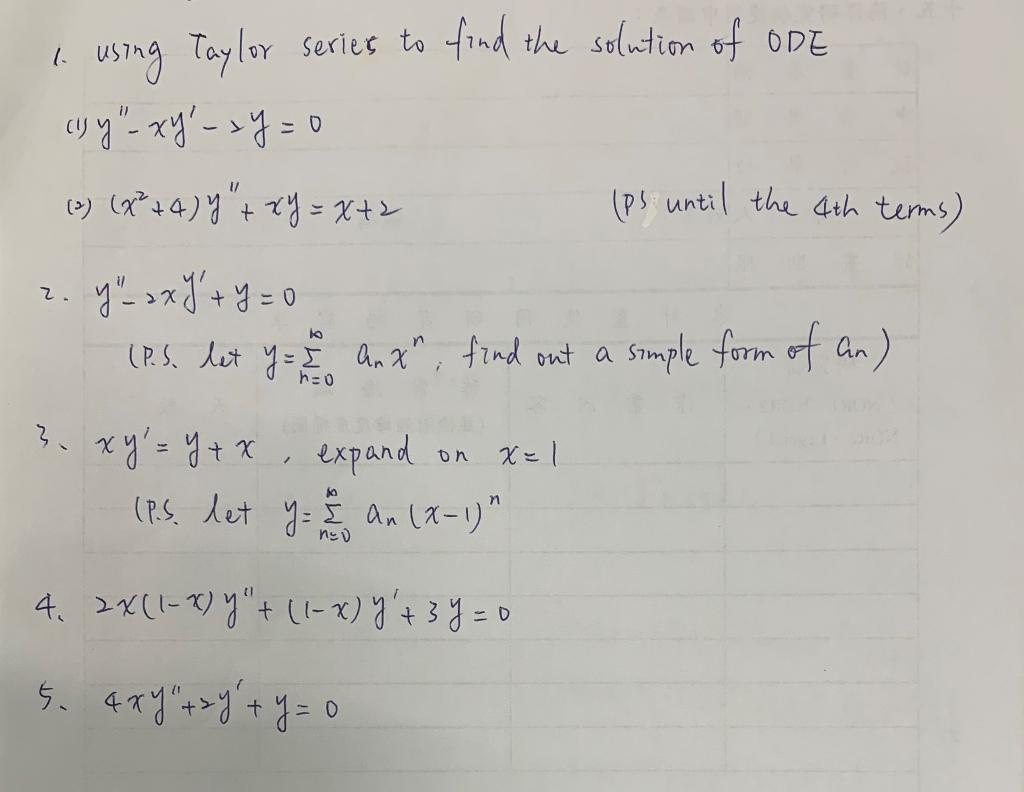



Solved 1 Using Taylor Series To Find The Solution Of Ode Chegg Com




Expand The Following I 3a 2b 3 Ii 1 X Y 3 3 Iii 4 1 3x 2
To generate Pascal's Triangle, we start by writing a 1 In the row below, row 2, we write two 1's In the 3 rd row, flank the ends of the rows with 1's, and add latex11/latex to find the middle number, 2 In the latexn\text{th}/latex row, flank the ends of the row with 1's⋅(1)3−k ⋅(−x)k ∑ k = 0 3 Transcript Example 22 Write the following cubes in the expanded form (3a 4b)3 (3a 4b)3 25 (a) Expand 3) 2 1 (x (b) Expand 6) 3 2 (x in ascending powers of x up to the term in 2 x (c) Find the coefficient of 2 x in the expansion of 6 3) 3 2 2 1 (x x 26 Find the constant term in the expansion of 6 2) 4 1 2)(2 3 1 (x x x 27 Find the coefficient of 4 x in the expansion of 6 7) 2 1 3 (x xExpand the following `(i) (3a2b)^(3) (ii) ((1)/(x)(y)/(3))^(3)` (iii) `(4(1)/(3x))^(2)`




Expand X 2 2y 5 Using Binomial Expansion Youtube




Using Binomial Theorem Expand X Y 5 X Y And Hence Find The Value Of Root 2 1 5 Root 2 1 5 Maths Binomial Theorem Meritnation Com
50 K views 34 K people like this Like Share Share Answer Text Answer 2 log x 3log y 4 log z Related Video Find the expansion of the following (xy1) whole cube Share with your friends Share 0Free expand & simplify calculator Expand and simplify equations stepbystep This website uses cookies to ensure you get the best experience By using this




Learn Algebraic Identity Of X Y And X Y In 3 Minutes
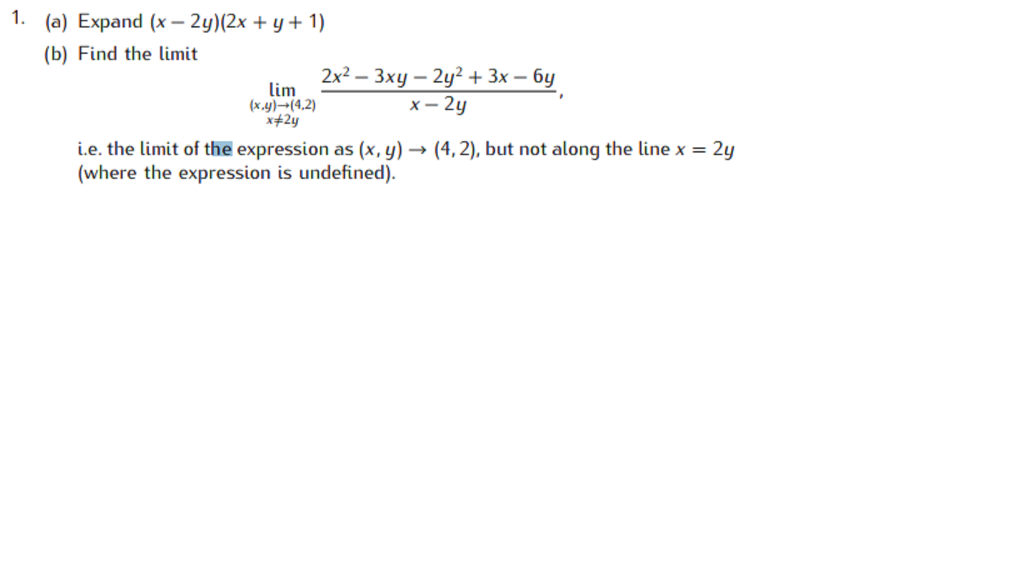



Solved 1 A Expand X 2y 2x Y 1 B Find The Limit Chegg Com
Expand the following i) ( 3a 2b )3 ii) ( 1 upon x y upon 3)3 Maths Polynomials NCERT Solutions;Type the following First type the equation 2x3=15 Then type the @ symbol Then type x=6 Try it now 2x3=15 @ x=6 Clickable Demo Try entering 2x3=15 @ x=6 into the text box After you enter the expression, Algebra Calculator will plug x=6 in for the equation 2x3=15 2(6)3 = 15 The calculator prints "True" to let you know that the answer is right More Examples Here are moreExample 1 Expand 4(3 x − 2) 4(3 x − 2) = 12 x − 8 Multiply everything inside the bracket by the 4 outside the bracket Example 2 Expand and simplify 3(x 5) − 4(2 x 3) 3(x 5) − 4(2 x 3) = 3 x 15 − 8 x – 12 = 3 − 5 x 1 Expand each set of brackets separately by multiplying (x 5) by 3 and (2x 3) by −4 2 Simplify by collecting like terms 3x −



Cbse 9 Math Cbse Polynomials Ncert Solutions




Misc 10 Evaluate 1 X Y 1 X Y Y 1 X X Y Chapter 4 Ncert
Distributive Property Questions and Answers Test your understanding with practice problems and stepbystep solutions Browse through all study tools Solve the following formula for b y = 32 x 3 2a = _____ Sometimes you need to write an expression as a single logarithm Use the rules to work backwards Example 6 Write 2 log 3 x log 3 y as a single logarithm log 3 x 2 log 3 y Use the Power Rule for Logarithms to move the 2 in 2 log 3 x to the exponent of x = log 3 x 2y Use the Product Rule for Logarithms The answer is 2log 3




Q78 Expand 1 X Y 3 3 Find The Cube Of 1 X Y 3 Evaluate 1 X Y 3 3 1 X Y 3 Whole Cube Youtube




How Do You Find The Coefficient Of X 6 In The Expansion Of 2x 3 10 Socratic



How To Solve For X And Y In X Y 5 And Xy 6 Quora
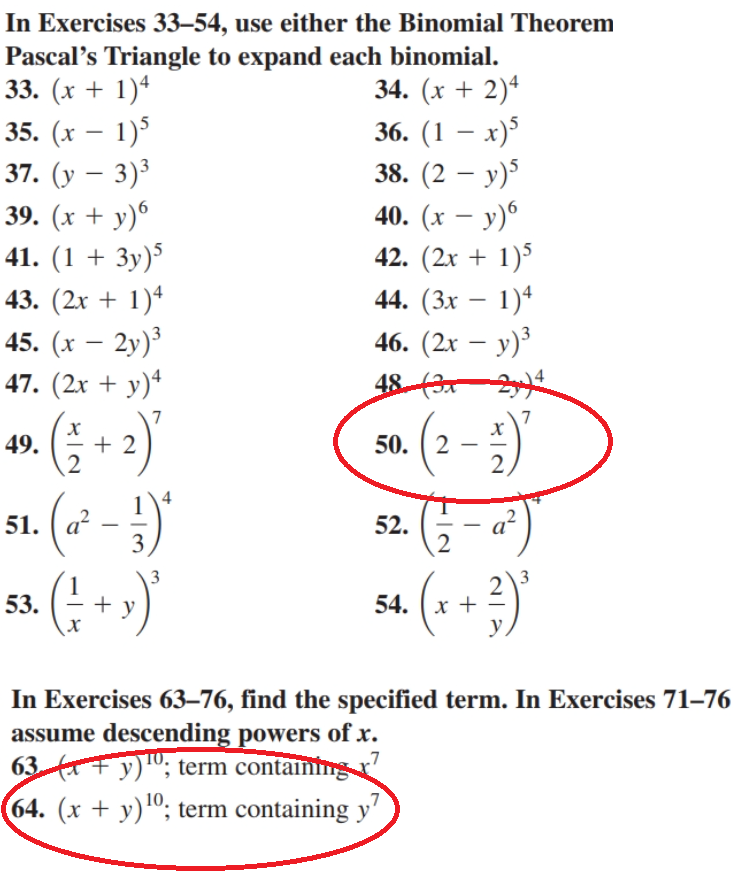



Solved In Exercises 33 54 Use Either The Binomial Theorem Chegg Com
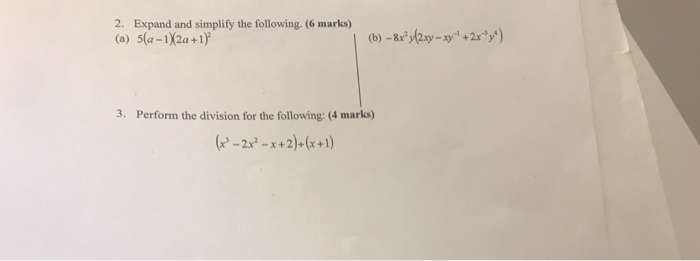



2 Expand And Simplify The Following 6 Marks A Chegg Com




X 2 2y 3 1 And X Y 3 3 Find X And Y Values Using Elimination And Substitution Method Youtube




Algebra Manipulation Given X Y Xy 3 Evaluate X 3 Y 3 Mathematics Stack Exchange




Simplifying Expressions
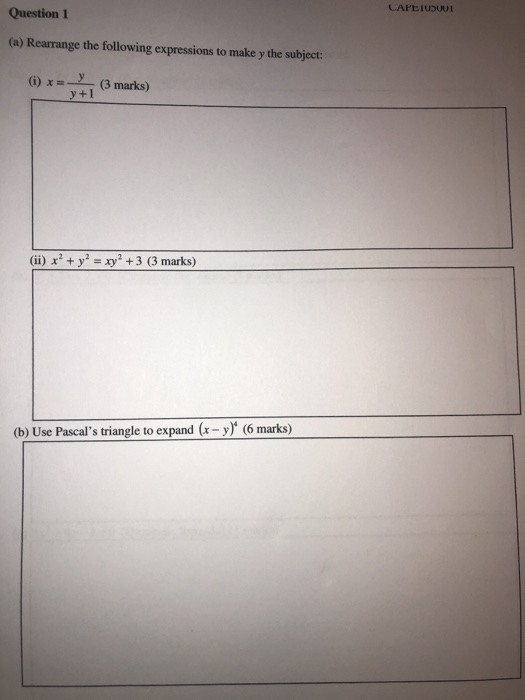



Solved Question 1 A Rearrange The Following Expressions To Chegg Com




Learn Algebraic Identity Of X Y And X Y In 3 Minutes




X 2 2y 3 1 X Y 3 3 Solve The Given Equation Using Elimination And Substitution Method Youtube




Simplify X Y 3 X Y 3 6y X 2 Y 2 Youtube
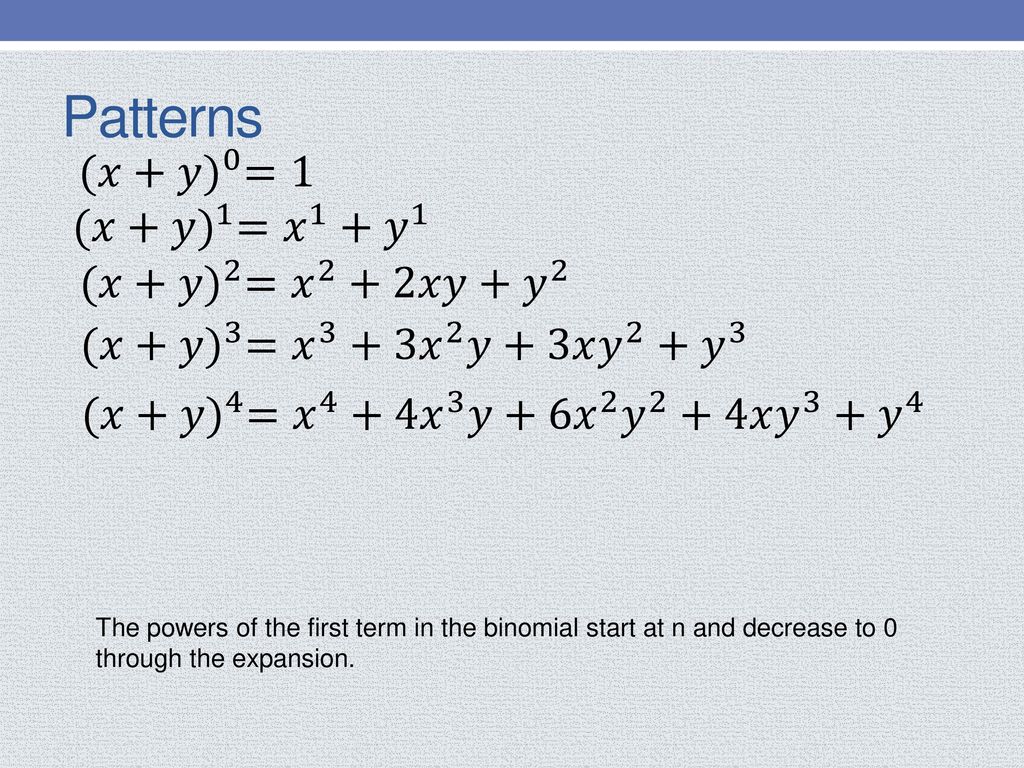



A Quick And Efficient Way To Expand Binomials Ppt Download



Expand Tan 1y X About The Point 1 1 Using Taylor S Theorem Up To The Second Degree Terms Sarthaks Econnect Largest Online Education Community




X Y 2 3 Find The Expansion Of The Following Brainly In




Please Expand 1 X Y 3 Whole Cube Brainly In




Ml Aggarwal Solutions For Class 9 Chapter 3 Expansions Download Free Pdf
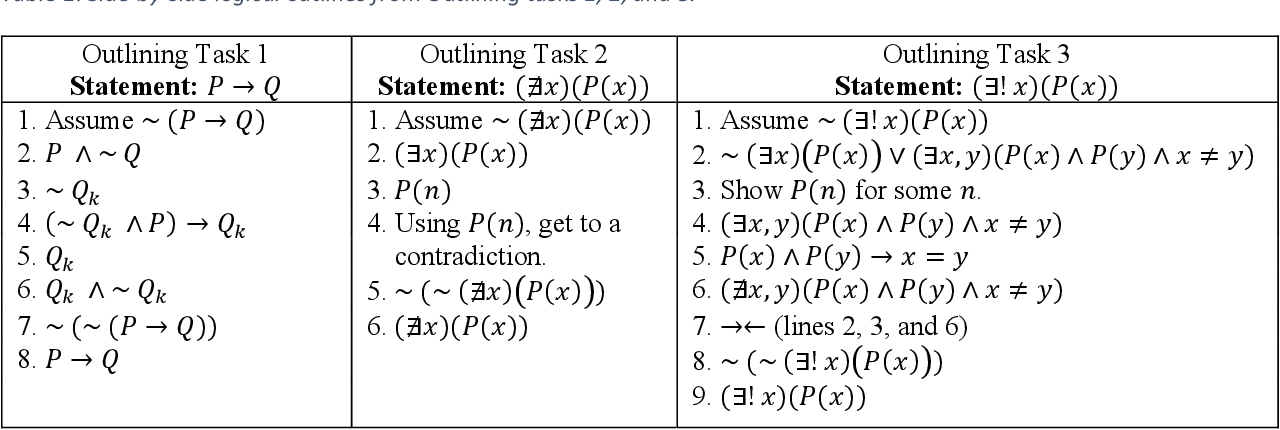



Pdf Developing Proof Comprehension And Proof By Contradiction Through Logical Outlines Semantic Scholar
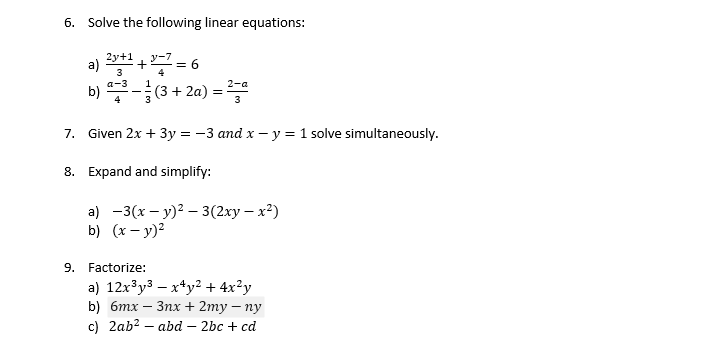



Solved 6 Solve The Following Linear Equations A 2y 1 3 Chegg Com



X 5 X2 2x 12 Simplify The Following A 7xy 5x 4x Gauthmath




Misc 10 Evaluate 1 X Y 1 X Y Y 1 X X Y Chapter 4 Ncert




Binomial Theorem



What Is The Answer Of X Y Quora
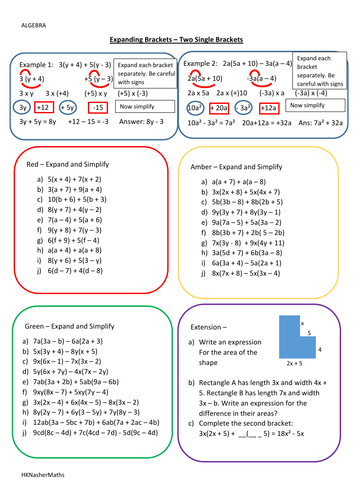



Expanding Brackets Expand 2 Single And Simplify Teaching Resources




Solved In Exercises 1 15 Expand The Given Logarithm And Chegg Com



1




Alg2 March28 The Answers



Which Term In The Expansion Of X Y 1 3 Y X 1 3 1 2 21 Contains X And Y To One And The Same Power Sarthaks Econnect Largest Online Education Community
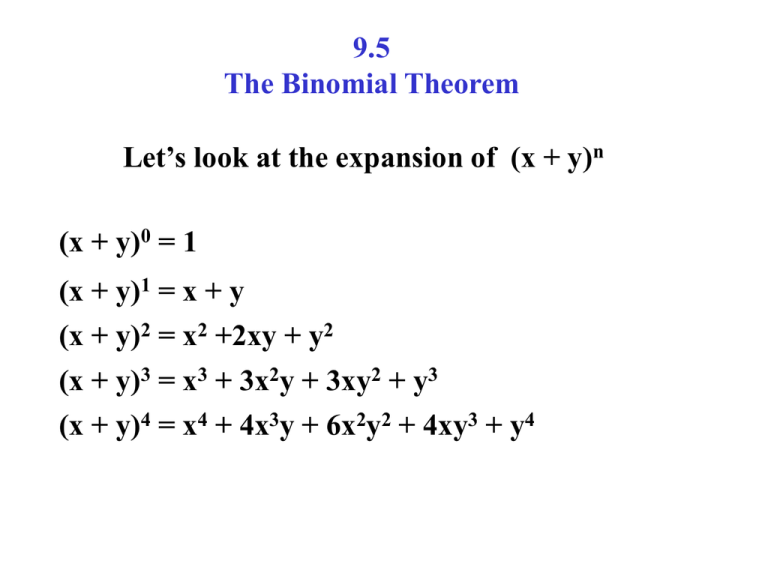



9 5 The Binomial Theorem




X Y 2 Expand Aoierrico




Expand The Following I 3a 2b 3 Ii 1 X Y 3 3 Iii 4 1 3x 2




Example 7 Find Coefficient Of X6y3 In Expansion X 2y 9



How To Solve For X And Y In X Y 5 And Xy 6 Quora




Learn Algebraic Identity Of X Y And X Y In 3 Minutes




Solved Expand 1x Y3 3 Maths Questions




Boolean Function Properties Three Special Functions The Boolean




Pc12 Sol C08 8 6
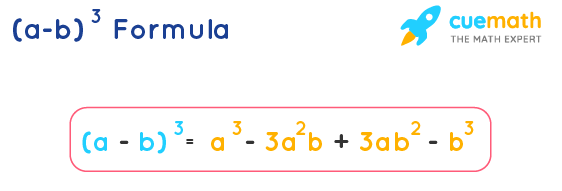



A Minus B Whole Cube Formula Examples A B 3 Formula




Write Each Of The Following In Expanded Form 1 X Y 3 3 Brainly In




12 Expansion Of X Y 3 Y Z 3 Z X 3 Is A 2x 3 2y




T Madas What Is 47 X 12 47




Expand The Following 1 X Y 3 3 Plz Give All The Steps Also Brainly In



Using Properties Of Determinants Prove The Following 1 X 1 1 1 1 Y 1 1 1 1 Z Xyz Xy Yz Zx Sarthaks Econnect Largest Online Education Community




Is X 1 Y 1 X Y 1 0 X Y 2 Xy 0 Data Sufficiency Ds




Architectures Of Dna A B C D Mb X Y Y Stands For An Inverted Download Scientific Diagram




Solved Use The Binomial Series To Expand The Function As A Chegg Com




Binomial Theorem Wikipedia




Expand 1 X Y 3 3 Using Identity Brainly In




Binomial Expansion Made Easy Expand X Y Algebra Youtube




Expand The Following I 3a 2b 3 Ii 1 X Y 3 3 Iii 4 1 3x 2 Youtube
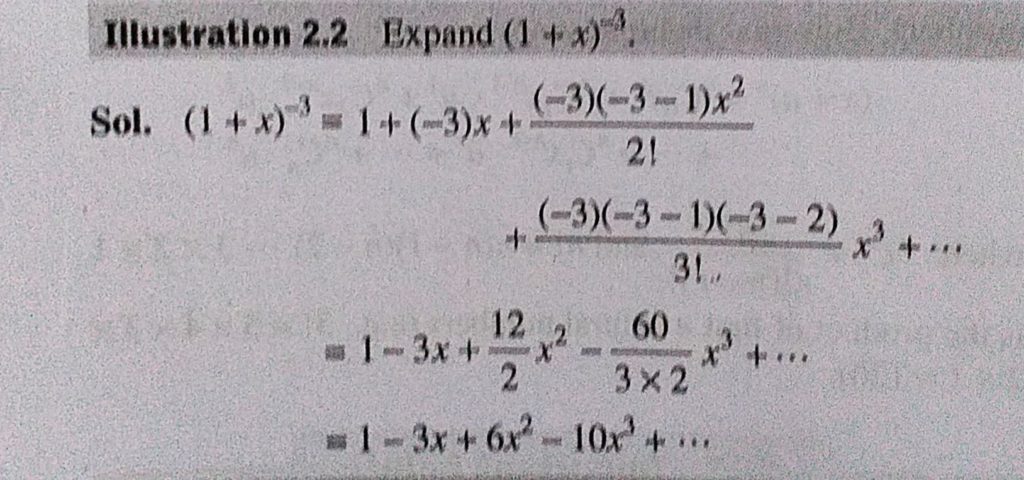



Expand 1 X 3 Sahay Lms




Find The Expansion Of X Y 1 Whole Cube Brainly In
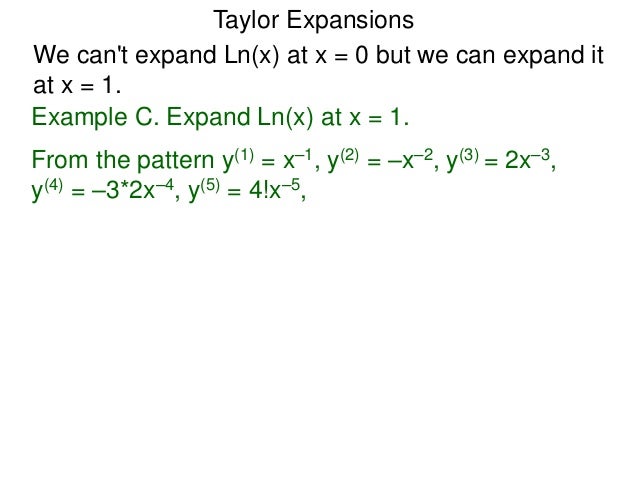



29 Taylor Expansions X




Expand 1 X Y 3 3 Solve It Fastly Brainly In




Ex 2 5 4 I Expand Each Using Suitable Identities X 2y 4z 2




How Can We Expand X Y 1 2 Youtube



1



Is There A Shortcut To Expand The Equation X Y Quora




Chapter 4 Exponential And Logarithmic Functions 15 Days




Expansion Of X Y 3 Y Z 3 Z X 3 Is What Brainly In




Expand The Following 2x Y 3 Brainly In



Solve For X And Y X 2 2y 3 1 X Y 3 3 Sarthaks Econnect Largest Online Education Community
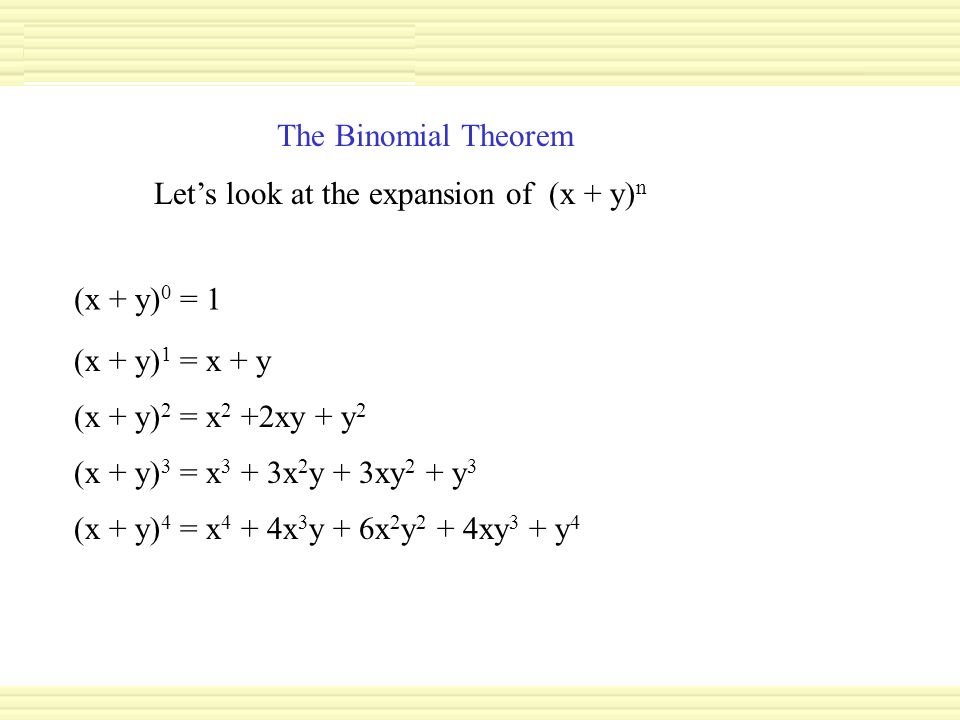



Simplify The Expression Ppt Video Online Download




Taylor Series Expand X 2y 3y 2 In The Powers Of X 1 And Y 2 Up To 3 Degree Terms Youtube




3 An Emaxima Session Download Scientific Diagram




1 Expand Y 3 X 2 Brainly In




1 Expand The Following A 7x 1 2 E X Y 2 X Y Scholr



Expand 1 X Y 3 Whole Cube Studyrankersonline



How To Expand 2x Y 3 Quora




Please Expand 1 X Y 3 Whole Cube Brainly In




How To Expand Using The Identity X Y 3 X3 Y3 3x2y 3xy2 Youtube




Assessment Algebra Dev Assessment In Algebra Lb 1 Hour 1 If A 2 B 3 And C 4 Evaluate Studocu




How Do You Expand X 3 5 Using Pascal S Triangle Socratic




Lesson Worksheet Pascal S Triangle And The Binomial Theorem Nagwa



0 件のコメント:
コメントを投稿